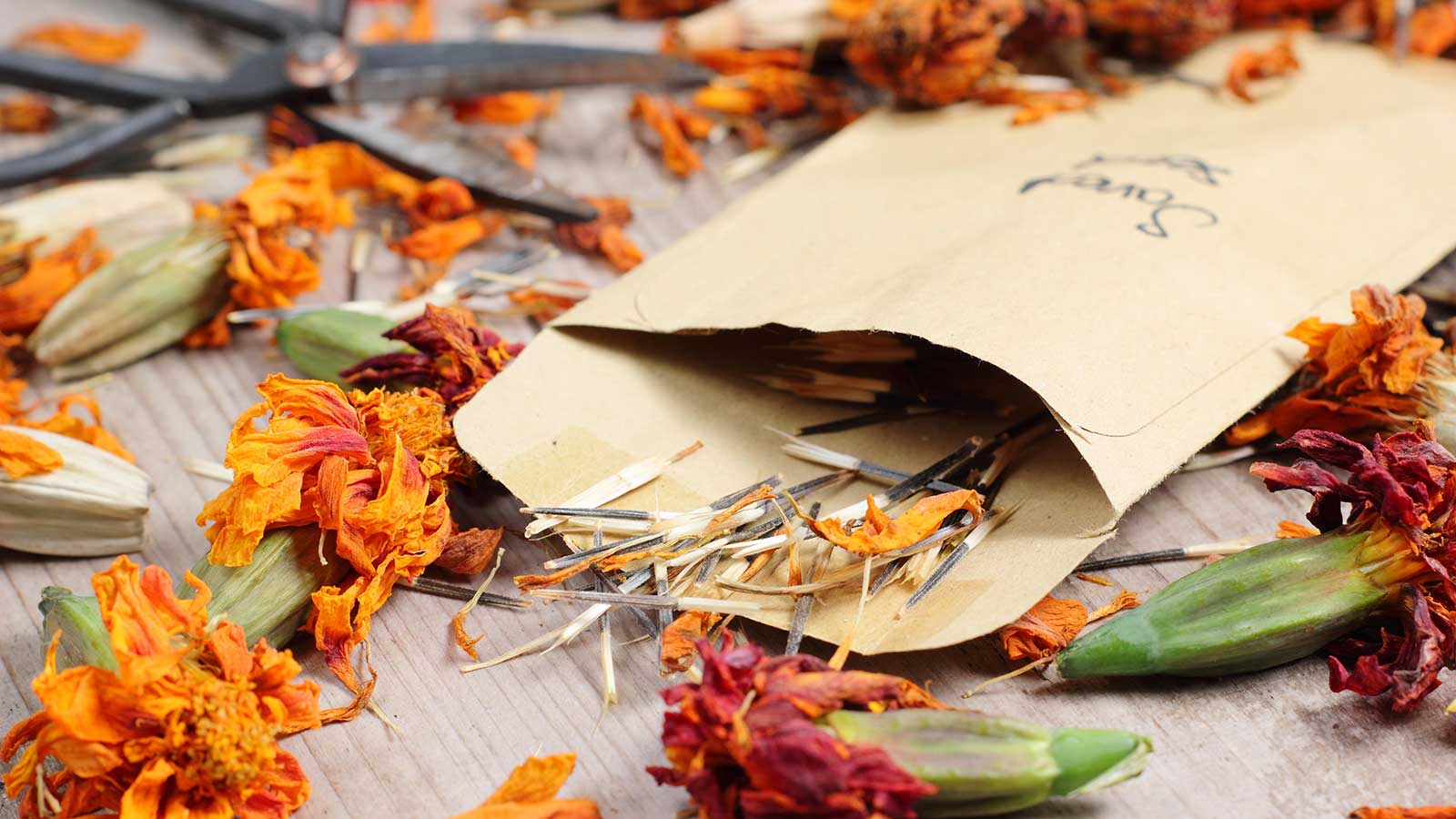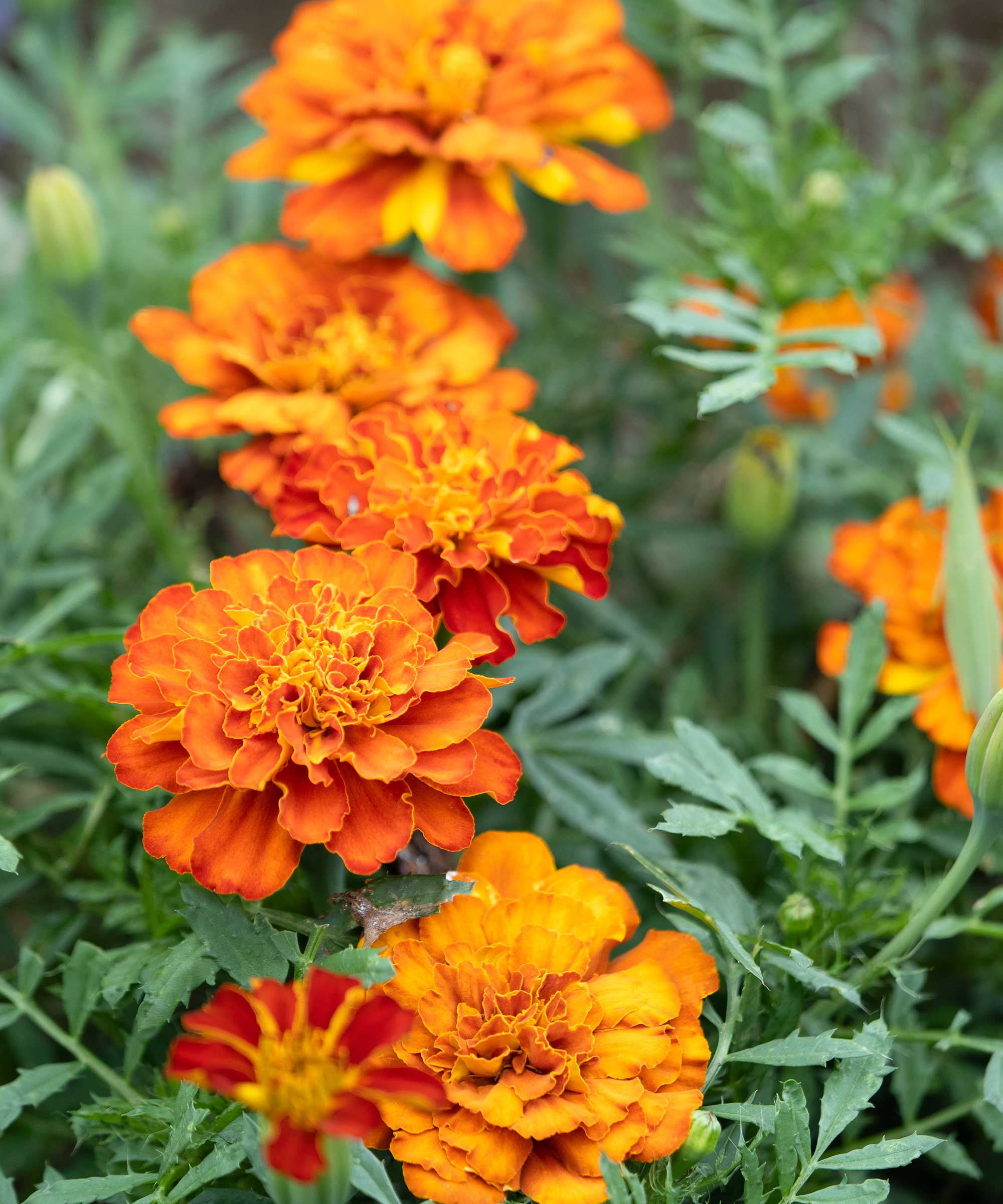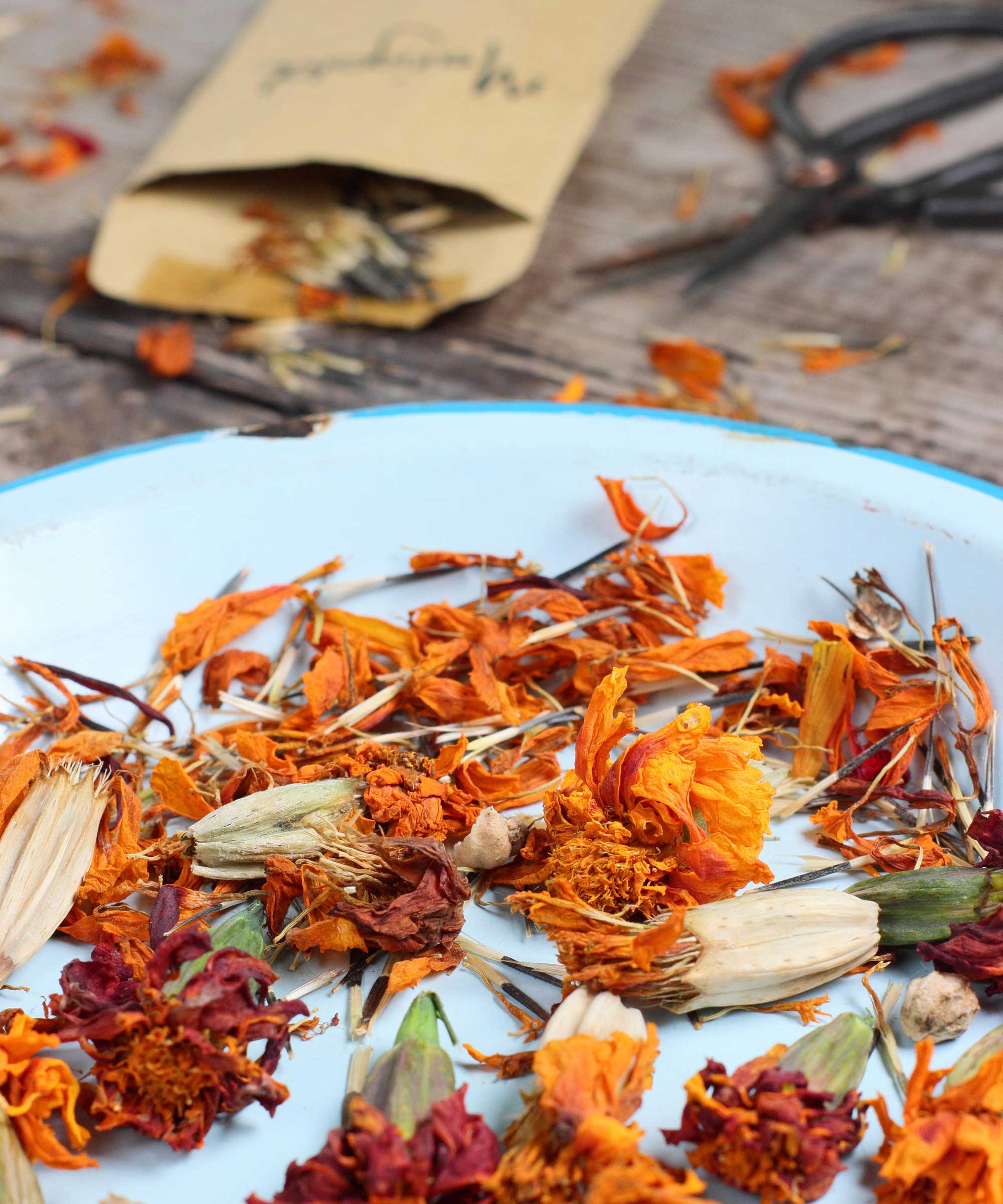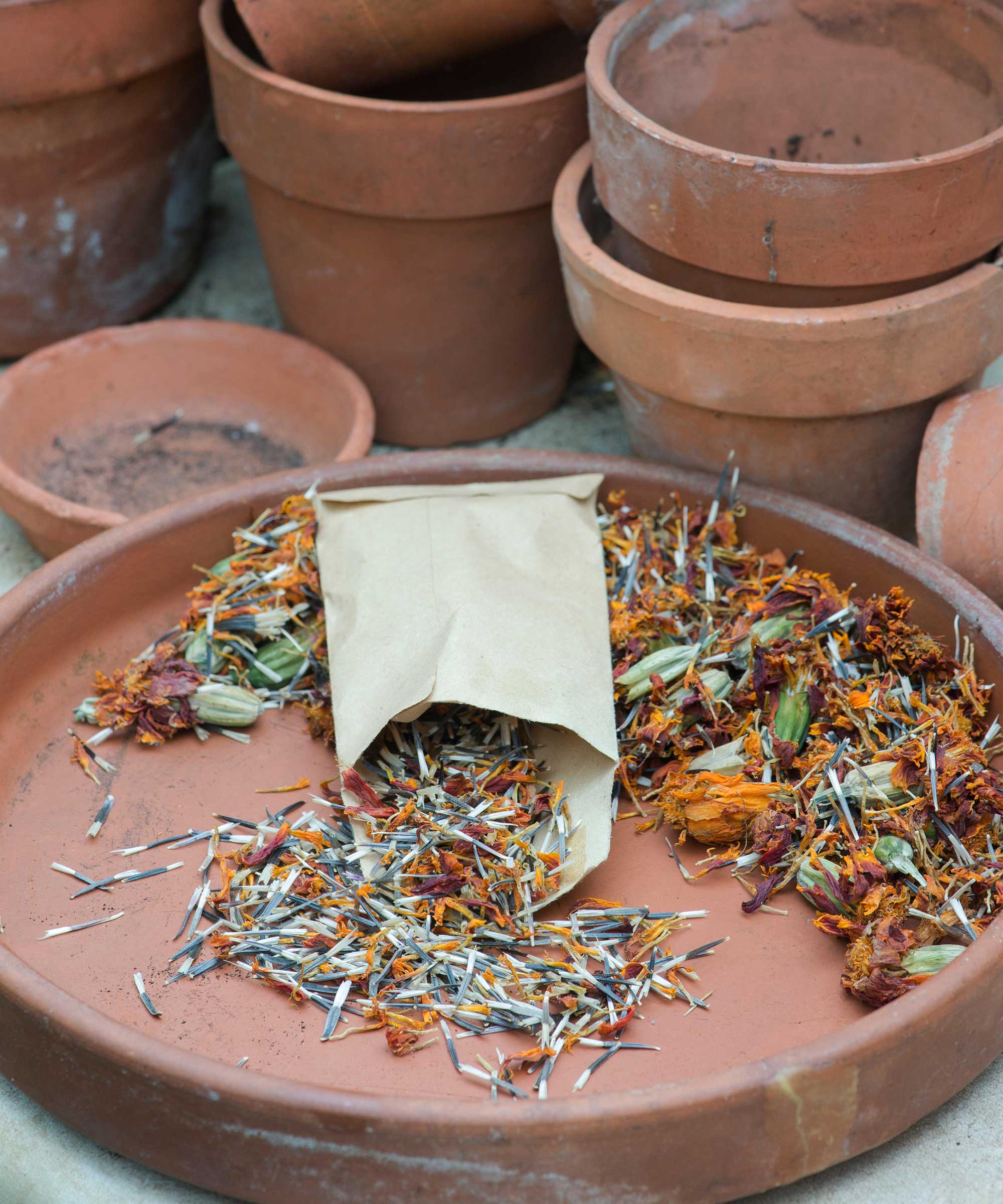
Q: I planted marigolds in containers this year and absolutely love them – they were so easy to grow and add a welcome splash of color to my patio. I'd like to collect the seeds to sow next year, rather than buy new packets. Do you have any advice on how to do this?
A: Collecting seeds is budget-friendly, rewarding, and well worth doing if you want to fill your plot with new plants for free. As Meredith Bishop, a cut-flower grower of Bloom & Bounty, highlights, 'The potential life that one single, dormant seed holds is truly mind-blowing.
'Marigolds are both one of the easiest flowers to grow and easiest seeds to save for future plants,' Meredith continues. But, while it only takes a few steps, it's worth remembering the following tips for the best results.

An expert guide on saving marigold seeds
Whether you plan to sow marigolds for companion planting, container gardening, or to line the front of a flowerbed, this expert advice will come in handy for fresh plants next year.
When to harvest marigold seeds

Amy Enfield of ScottsMiracle-Gro says, 'Marigolds will bloom from early summer until they are hit with a hard frost in mid- to late fall. By letting the flowers go to seed in late summer, you make sure you can harvest the seed before the first hard frost.' That means holding back on deadheading.
According to Meredith, marigold seeds are ready to harvest when the spent flower head looks like a brown, dry and 'toasty' pod. 'Harvesting before this point will result in wet, immature seeds which will not germinate,' she warns.
Top tip: When mature, the lower portion of the seeds inside the pod will be almost black, notes Jessica Mercer of Plant Addicts.
How to harvest marigold seeds

Meredith cuts the seed pods from the plants directly into a brown paper bag or a large bowl. 'Then, I will work on harvesting the seeds in one batch. I simply rub the dry pod between two fingers into the same vessel or brown paper bag to crack the outer covering of the seedhead, revealing the quill-like marigold seeds inside.'
Each pod will produce between 30 to 50 seeds, she says. These can be pulled from the pod. 'The chaff (outer seed covering) can be hand-removed, but will not hurt germination if left to dry with the seed,' she adds.
Once harvested, Jessica advises spreading the seeds on a paper towel and allowing them to air dry in a cool, dark space. 'Once the seeds are dry and brittle (in approximately one week), you can store the seeds,' she says.
FAQs
How should you store harvested marigold seeds?
Meredith Bishop, a cut-flower grower, recommends storing the seeds in a sealed envelope or brown paper bag, labeled with the variety and year. Keep this in a dry, dark place until ready to sow, she instructs.
We like this stylish seed storage box from Katai at Amazon, which includes 20 seed packets plus monthly divider cards. It's perfect for storing saved cucumber seeds or basil seeds, too.
Which varieties of marigolds should you harvest seeds from?
Jessica Mercer of Plant Addicts says, 'Seeds from open-pollinated and heirloom varieties are more likely to come true.' This applies when saving tomato seeds, too.
If you're looking to grow heirloom varieties of French marigolds (Tagetes patula), Amy recommends 'Harmony' (available from Amazon), 'Bolero', and 'Bonita'. For African marigolds (Tagetes erecta), which make great cut flowers, she suggests the heirloom varieties of 'Sugar & Spice', 'Mandarin', and 'Crackerjack' (also available from Amazon).
You can still collect and plant seeds from hybrid varieties, Jessica adds. The resulting plants may look different from the parent plants, but they can be fun to introduce to your garden.
There are lots of other flowers you can save seeds from. Our guides on how to harvest peony seeds and how to harvest coneflower seeds, for instance, have lots of useful advice.







